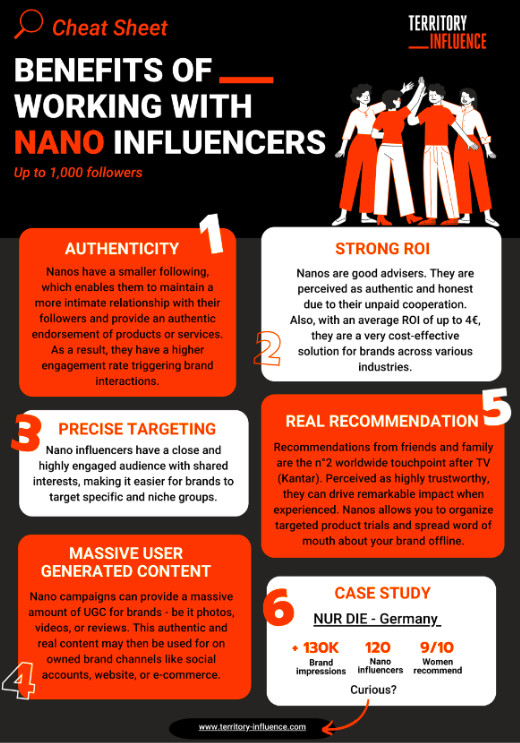Digital video consumption has surged to unprecedented levels, driven primarily by creator content. As a result, advertisers are increasingly directing their budgets towards influencer marketing. According to IAB and TalkShop, 44% of marketers plan to increase their investment in creators this year, with spending up by 25%. Goldman Sachs projects the creator economy to grow from $250 to $480 billion by 2027. As creators become more integral to advertising budgets, their role will expand from experimental to essential.
At TERRITORY Influence, we are embracing this trend. Our recent campaign with Sazerac used nano influencers and prominent creators, generating 6.2 million impressions and a 7.5% sales increase in Germany. As our managing director, Stefan Schumacher, notes, creator activity is now central to brands’ marketing plans.
Redefining Brand Advocacy with Creators
IAB’s report shows creator ads have a 1.4-times greater impact on brand loyalty and a 1.3-times greater impact on brand advocacy than traditional ads. With consumers posting less content, the need for influencers to fill the void has increased.
Consumers trust creators deeply, even as they call out inauthentic content. Brands and creators are expected to form more selective and long-term partnerships in 2024. Additionally, marketers will likely hire creators to produce content for brand-owned channels. Uber’s TikTok strategy, for example, uses a small number of creators to make content for the brand.
“Creators being on their own and working with no confines can be a lot more innovative, bold, daring, and as a result, the content is more effective,” says Stefan Schumacher.
Popularity vs. Influence: The Rise of Nano & Micro-Influencers
Traditionally, the focus has been on macro-influencers with millions of followers. However, brands have often mistaken popularity for influence. As the industry matures, the importance of follower count is diminishing. Metrics like engagement, click-through rates, and comment sentiment are proving to be better success indicators. Follower count can also skew towards less diverse backgrounds.
At TERRITORY Influence, we believe everyone can be a creator and has influence. We focus on the impact of different types of influencers, considering their credibility, audience engagement, content quality, and ability to drive actions and sales.
Micro-influencers, with smaller but highly engaged communities, offer a more authentic connection to target audiences. “Micro creators, who might have smaller audiences but strong engagement rates, are retaining high interaction levels as they gain followers,” says Zoltan Palotai, Executive Director at TERRITORY Influence.
Social Commerce: Fueling the Creator Economy
As marketers plan their creator strategies for next year, social commerce is a key focus. The recent launch of TikTok Shop in the U.S. has generated excitement, despite mixed initial results. For some brands, it has doubled their revenue within three months.
U.S. social commerce sales are projected to grow from $67 billion in 2023 to over $144 billion by 2027, according to Insider Intelligence. Data shows 53% of Gen Zers purchased after watching a review video, while haul and “get ready with me” (GRWM) videos drove 40% and 37% to purchase, respectively.
The seamless shopping experience offered by social commerce is appealing, and social media apps play a significant role in product discovery, especially among Gen Z adults, who often start searches on TikTok, YouTube, or Instagram rather than Google.
Influencers will evolve from endorsers to influential shopping guides, integrating products into their lifestyles and providing genuine insights. This approach builds trust and guides followers through the decision-making process, a feat traditional advertising often struggles to achieve.
5 Essential Recommendations for Brands
The rise of creator-led advertising signifies a profound transformation in marketing strategies. As digital video consumption continues to surge, influencers are increasingly central to brand campaigns, surpassing traditional advertising methods. This shift boosts brand loyalty and advocacy and reflects consumers’ heightened trust in genuine creator content.
Looking forward, brands should consider the following recommendations:
-
Embrace Authenticity: Partner with influencers who align authentically with your brand values and resonate deeply with your target audience.
-
Invest in Long-Term Partnerships: Cultivate enduring relationships with creators to foster genuine connections with their followers over time.
-
Explore Social Commerce: Leverage platforms like TikTok Shop to integrate seamlessly into consumers’ social media experiences and drive direct engagement and sales.
-
Measure Beyond Follower Count: Look beyond vanity metrics and prioritize metrics like engagement rates, click-throughs, and sentiment analysis to gauge true influence.
-
Empower Nano and Micro-Influencers: Recognize the impact of smaller influencers with highly engaged communities who can offer more personalized and relatable content.


